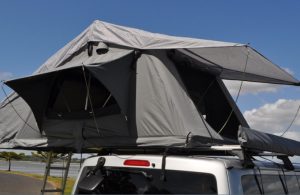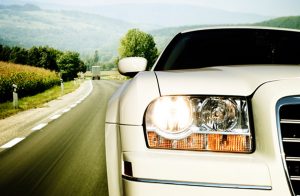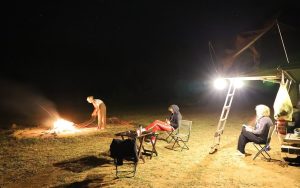Uganda is one of the few countries that you can easily discover with a rental car. The country has relatively good road infrastructure, large vehicle hire fleets run by international and local rental companies, great weather and plenty of stunning scenery – which combines to make self-driving a viable and enjoyable option. However taking a self drive in Uganda is not all that easy! Therefore If you’re thinking of taking the long way round, here are a few tips to enhance your trip.
Car hire
Most car rental companies have various branches throughout the country and at the only airport found in this country. So Vehicles may generally be picked up at any company at branch and dropped at any point within and outside the country after negotiations, subject to a fee.
It is advisable to take out the insurance offered by the vehicle rental companies, unless you have specific cover in place. All major credit cards are accepted.
Driver’s licenses
Any valid driver’s license is accepted in Uganda, provided it bears the photograph and signature of the holder and is printed or authenticated in English.
However, vehicle hire companies may also require an international driver’s license. It is worth confirming requirements with your travel agent or the vehicle hire company when making your booking. This holds for additional drivers as well, who must be identified when you hire your vehicle. Remember to carry all your documentation with you when you travel as traffic officers will expect to see it if they stop you for any reason.
Keep left, belt up, think kilometers
Keep left, pass right. Ugandans drive on the left-hand side of the road, and our cars – rental cars included – are therefore right-hand drive vehicles, the gear shift being operated with the left hand.However,we at Uganda car rental, we also have left-handed vehicles that we give out as well on your requisition. This is due to the fact that we have clients who rent cars to travel to Rwanda where they keep right.
All distances, speed limits (and speedometers) are marked in kilometers.
Wearing of seat belts is compulsory. Using hand-held phones while driving is against the law – use a vehicle phone attachment or hands-free kit if you want to speak on your mobile phone.
Drinking and driving is prohibited. The legal limit is a breath alcohol content of 0.24mg per 1 000ml, or a blood alcohol limit of 0.05g per 100ml. But how do you know if you’re over the limit?
Speed limit
The general speed limit on Uganda’s national highways, urban freeways and other major routes is 120km/h (75mph). On secondary (rural) roads it is 100km/h (60mph). In built-up areas it is usually 60km/h (35mph), unless otherwise indicated. Check the road signs.
If you’re in a hire car and get a speeding fine, the car rental company will pay the fine, and will charge that amount plus an admin fee to your credit card.
Filling up
Various types of petrol stations are located and evenly distributed throughout the country. All the country’s high ways have them on the road sides so whenever you run short of it you just branch and stop at the station for refueling. These are open 24/7 and their prices are always the same since they are oligopoly firms and they use cut-throat method in determining prices.
Ugandan petrol stations are not self-help: an attendant will fill the car, ask if you’d like your oil and water and tyre pressure checked, and offer to clean your windscreen – a service for which they are generally tipped for.
When it comes to paying for fuel, you can pay cash or use your credit card. Historically, filling stations used to be cash-only operations so some smaller stations may still not accept cards. Check with the attendant what payment method they accept before filling up. Many filling stations have on-site ATM machines.
Driving around the country
Our road infrastructure is relatively good, so driving between cities and towns is a viable option – and, given the stunning scenery in many parts of the country, a highly enjoyable one.
However, Uganda is a huge country not easily traversed in a day, so plan your journeys carefully. If you’re not used to driving long distances, rather break the journey, as fatigue is a major contributing factor in motor vehicle accidents. While most national roads are tarred and in good condition, the more rural the road, the more likely it is to be pot-holed and poorly surfaced.
Road info, maps: Current information on the conditions of roads can be obtained through the traffic police of Uganda. This very institution also provides invaluable guides for road users in the form of strip maps tailored for specific destinations and information for tourists on accommodation en route.
Traffic signs are generally pictorial or in English.
Safety
Uganda has a high rate of traffic accidents so drive defensively and exercise caution when on the roads – especially at night – and keep a wary eye out for pedestrians and cyclists.
Drivers of minibuses and taxis can behave erratically, and often turn a blind eye to rules and road safety considerations.
All Ugandan roads are not fenced, so watch out dogs, chickens, sheep and even cows on the road. These can be particularly hazardous at night.
Large wild animals can as well cross over into the road especially in areas where the road passes through a national park or game reserve like Mburo national park can also pose a danger – if you see road signs depicting animals, take it slowly, especially towards evening.
Never stop to feed wild animals – it is dangerous and you can incur a hefty fine if you do so.
In general, be aware and keep your wits about you. It’s a good idea to drive with your doors locked and windows up, especially in cities and at traffic lights.
Don’t ever stop to pick up hitchhikers. If you are worried about someone on the side of the road, report it to the police station in the next town.
Ensure your car is locked when you park it and do not leave anything in sight. Lock things away in the trunk – known as the boot here – or the glove compartment (cubbyhole).






